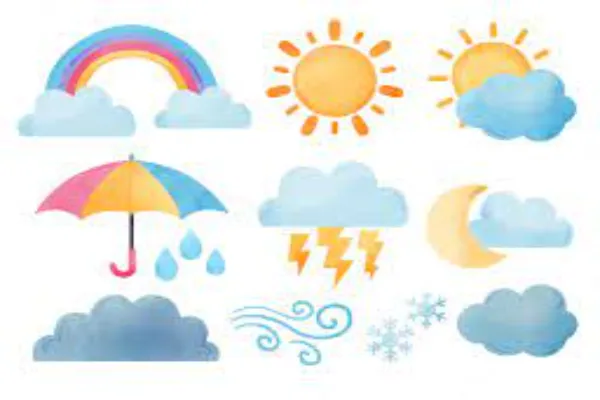We investigate the Mysteries of the Skies: What is Weather

From Clear Skies to Stormy Horizons: A Comprehensive Look at What is Weather
Author: Terri Nash
Independent freelance writer
In the ever-changing tapestry of our environment, there’s a dynamic force that shapes our daily lives and influences the natural world around us: weather. From the gentle caress of a warm breeze on a summer day to the thunderous roar of a storm, the intricacies of weather are a source of fascination and wonder that have captivated humanity for centuries.
The Essence of What Is Weather: Defining the Phenomenon
Weather encompasses the various atmospheric conditions that exist in a specific location at a given time. It includes a wide range of elements, such as temperature, humidity, wind speed, atmospheric pressure, cloud cover, and precipitation. These elements interact in complex ways to create the ever-shifting patterns that define our climate and the day-to-day conditions we experience.
The Building Blocks of Weather: Understanding Elements
To comprehend the intricacies of weather, one must first grasp the key components that contribute to its formation:

- Temperature: The degree of warmth or coldness in the air plays a central role in determining weather patterns. Temperature variations drive air movement and influence the moisture-holding capacity of the atmosphere.
- Humidity: The amount of moisture present in the air affects how we perceive temperature. High humidity can make a hot day feel even hotter, while low humidity can create a sensation of dryness and chill.
- Wind: The movement of air masses from areas of high pressure to low pressure leads to the phenomenon we know as wind. Wind patterns shape weather patterns on both local and global scales.
- Atmospheric Pressure: The weight of the air above us, known as atmospheric pressure, influences air movement and weather changes. Areas of high and low pressure give rise to different weather conditions.
- Clouds and Precipitation: Clouds are formed when moist air rises and cools, causing water vapor to condense into visible droplets. These clouds can lead to various forms of precipitation, such as rain, snow, sleet, and hail.
The Dance of the Elements: Weather Patterns
Weather is a result of the intricate dance between these elements. On a larger scale, the interactions between warm and cold air masses, driven by differences in temperature and pressure, shape weather patterns. These patterns often lead to phenomena like high-pressure systems (associated with fair weather) and low-pressure systems (associated with storms).
On a local level, the interplay between factors like topography, proximity to large bodies of water, and wind patterns can result in microclimates, where weather conditions within a small area differ from those in the surrounding regions.
Unraveling the Unpredictable: Challenges in Weather Forecasting

While our understanding of weather has advanced significantly over the years, predicting its behavior remains a complex challenge. Weather forecasting involves analyzing a multitude of factors and variables, from satellite imagery and atmospheric measurements to historical data and computer models. Despite these advancements, the chaotic and nonlinear nature of atmospheric systems introduces inherent limitations to accuracy and predictability, especially in the long term.
Weather and Human Lives: A Profound Connection
The impact of weather on human lives is profound and multifaceted. It influences our daily activities, shapes our clothing choices, determines agricultural practices, impacts transportation, and even drives economic decisions. Severe weather events, from hurricanes to heatwaves, can have far-reaching consequences that affect communities, infrastructure, and ecosystems.
The study of weather, meteorology, is not only a scientific pursuit but also a means of enhancing preparedness and resilience in the face of environmental challenges. Understanding weather patterns can help societies adapt to changing conditions, mitigate risks, and ensure the safety and well-being of populations.
Nature’s Symphony: The Beauty of Weather
Beyond its practical implications, weather carries an inherent beauty that captivates artists, photographers, and nature enthusiasts. Sunrise and sunset hues, rolling clouds, shimmering rainbows, and the balletic dance of snowflakes contribute to the enchanting visual spectacle of weather phenomena.
As we look to the skies and witness the ever-changing canvas of weather, we’re reminded of the interconnectedness of Earth’s systems and the awe-inspiring forces that shape our world. From the gentlest breeze to the fiercest storm, weather is a testament to the power and intricacy of our planet’s atmosphere, forever reminding us of the majesty and mysteries of the natural world.